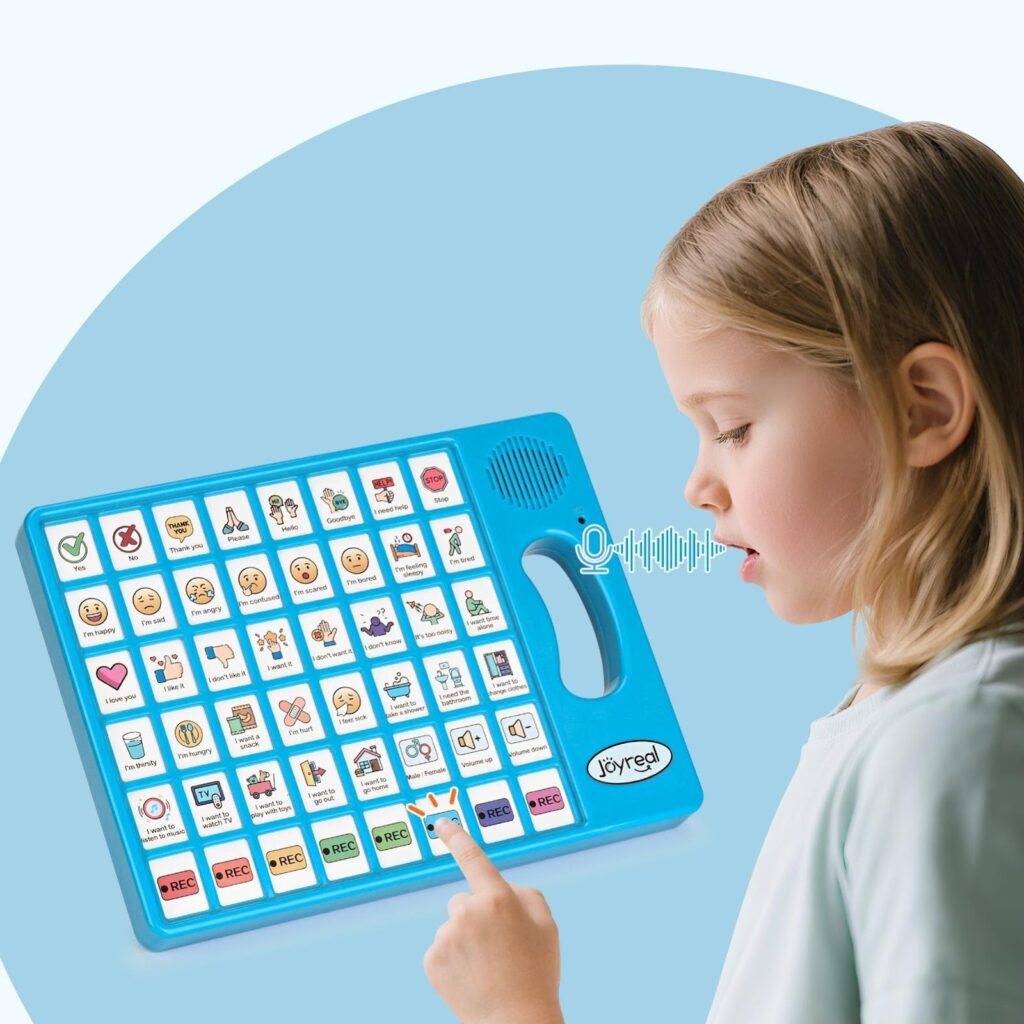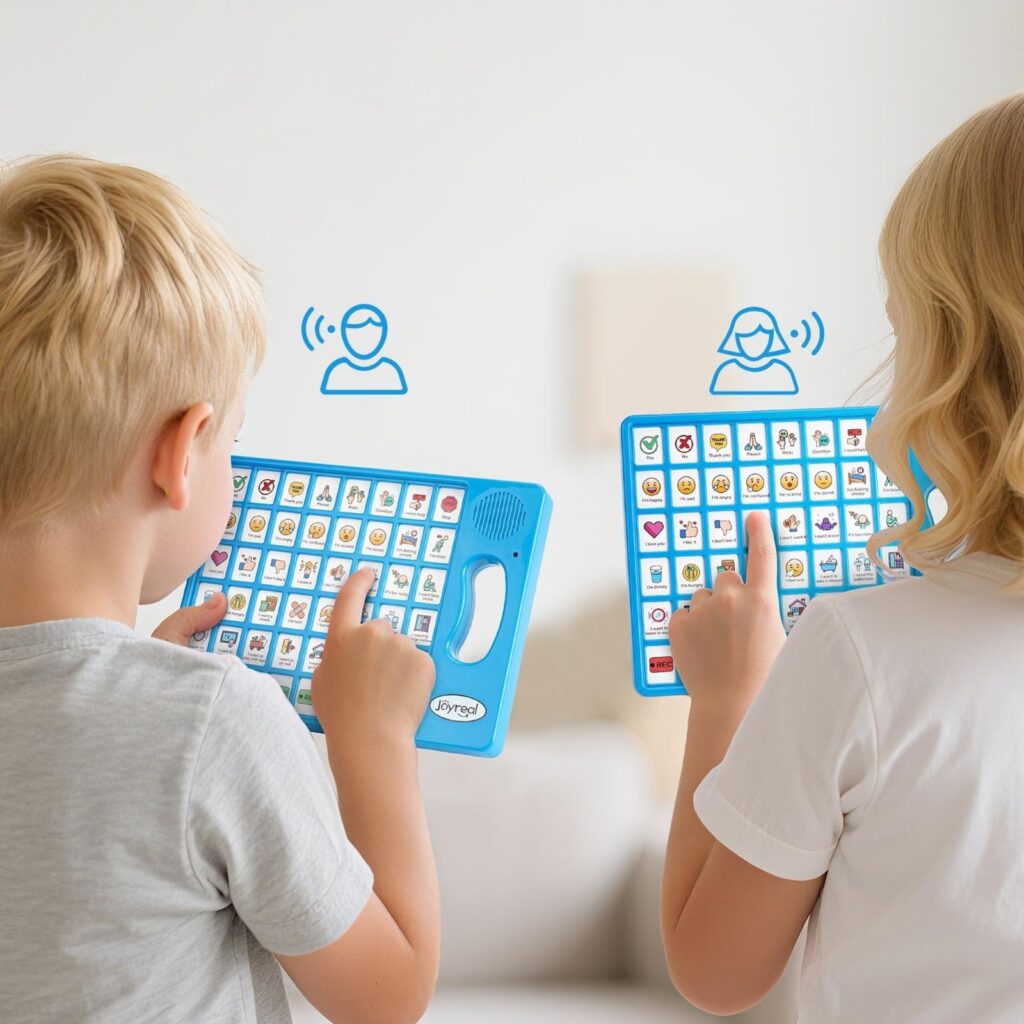Learning, connection, and confidence are based on communication. In the case of nonverbal children with autism, it is not necessarily an option to use traditional speech. That is where AAC communication devices and communication boards become important- providing the children with a voice that they may not have been able to express.
But with the tools being strong, the parents and teachers collaborate to be successful. Through alignment of strategies both at school and at home, the children have the opportunity of receiving the same level of support, and they express themselves better in all settings. Cooperation can be effective and easy with such solutions as Joyreal AAC communication devices and Joyreal communication board.
Why Collaboration Matters
In children who make no verbal contact, these problems of communication go further than the classroom. A child can be taught to use an AAC device during school, and it may not progress unless it is reinforced at home. Conversely, children benefit when parents and teachers exchange strategies, routines, and tools:
- Consistency- The identical cues and devices are employed in different settings.
- Confidence– Children can feel that they are appreciated in all their communication endeavors.
- More powerful abilities – Multiple contexts enhance the learning speed.
- Less frustration– Families and educators know the needs of the child better.
Teamwork also means that AAC is not merely a school resource, but a life resource.
The Role of Teachers
The first time many children are exposed to AAC devices for autism by their teachers. Their role includes:
- Demonstrating the use of equipment in lessons.
- Promoting students to engage in processes of classroom discussion through AAC.
- Incorporating technology such as Joyreal AAC communication devices into group work, story tellings or learning about subjects.
- Keeping parents updated on the progress in order to reinforce at home.
The first step is taken by teachers who make AAC a daily routine in the classroom.
The Role of Parents
Parents at home complement school learning. They can:
- Everyday choices (snacks, playtime, bedtime routines) should be made on a communication board.
- Customize the Joyreal AAC communication devices with a custom recording feature, including words that are specific to the family, such as Grandma or favourite toy.
- Appreciate any effort of communication, however minute.
- Keep in touch with teachers regarding the strategies that are performing best.
Home provides the place where children exercise communication processes in the most natural way; therefore, the intervention of parents is a necessity.
How Joyreal AAC Devices Are Transforming Communication for Children on the Autism Spectrum
Families explain that prior to the Joyreal AAC communication devices, most children with autism were frustrated, silent or anxious since they could not be understood easily. An illustrative case was when one of the parents talked about their 7 years old son who had Level 2 autism and could not speak much. Since he acquired Joyreal communicator, he started to use buttons to demand snacks, reject foods, and demand to play. In a few weeks, his parents observed a reduction in the number of meltdowns, in particular, at times when there would be confusion or anger. Due to the ease of use and simple icons with voice output, he was able to express his wants more effectively eliminating much of the frustration that had accumulated.
The other narrative is that of a family in which the daughter is Gianna. She had tried more complicated devices or applications but had been averse to them and found them too difficult to use. When it was changed to AAC devices for autism, she readily accepted it. The family has commented on how the buttons were lightweight and easy to carry and the intuitive nature of the buttons. Gianna had a chance to begin using it as a means of voicing simple needs such as requesting her snack, or telling her that she is tired, and after some time even more spontaneous phrases. Her parents also appreciated the fact that they could save personalized words in recognizable voices thus the device would be more personal and reassuring. Communication was also increased not only at home, but also in the car or other outings, where Gianna had additional opportunities to be involved and heard.
How to Strengthen Parent-Teacher Collaboration
The question of how to tighten the cooperation between parents and teachers is not new.
- Share Tools and Training – Teachers are able to demonstrate to parents how the devices are used in school, and thus they are at ease using them at home.
- Align Goals – Concur on communication priorities (asking to be assisted, sharing of feelings, making decisions), and support them in both environments.
- Use the Same Language and Symbols – Use of consistency in a communication board or even a communication device, such as an AAC, aids children to learn at a faster rate.
- Celebrate Progress Together – Frequent communication between parents and teachers makes both of them recognize and foster improvement.

Conclusion
AAC communication devices and communication boards are not just a tool when parents and teachers collaborate, but a lifeline to children with autism. Children are able to communicate in a consistent, supportive environment at both home and school, and a better sense of confidence and belonging is achieved.
This collaboration is practical, affordable, and effective due to Joyreal AAC communication devices and Joyreal communication board. Parents and teachers are able to send each child the gift of being heard together.
